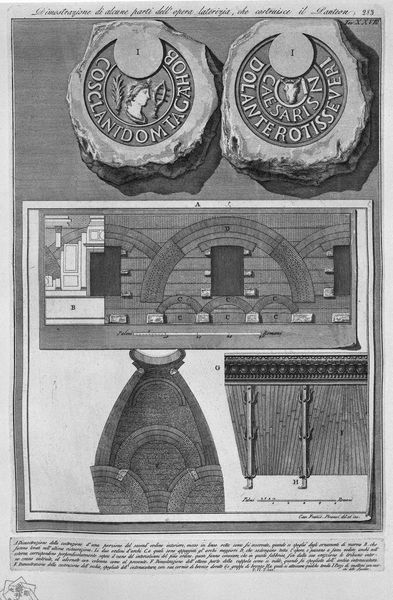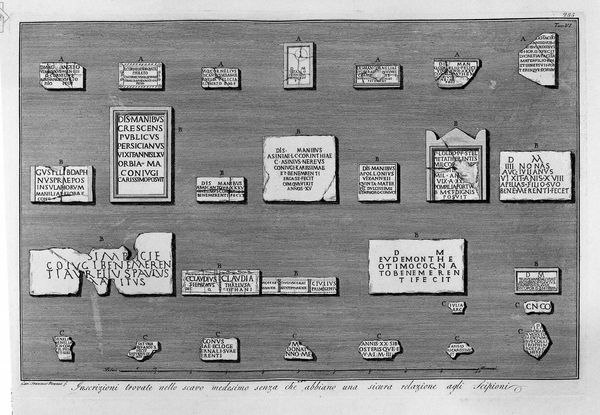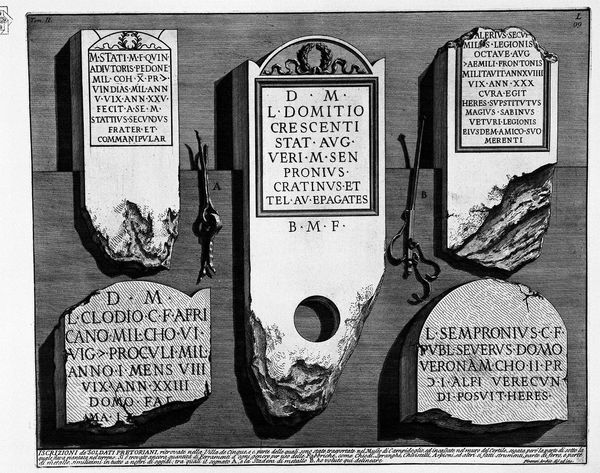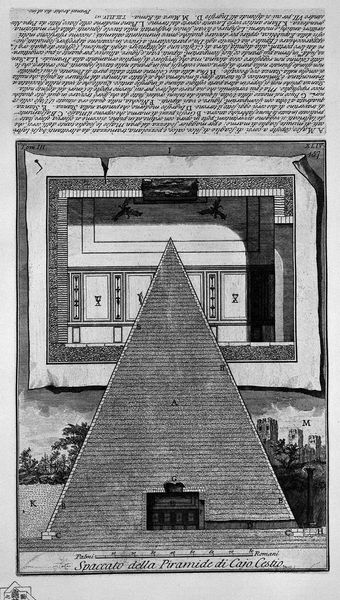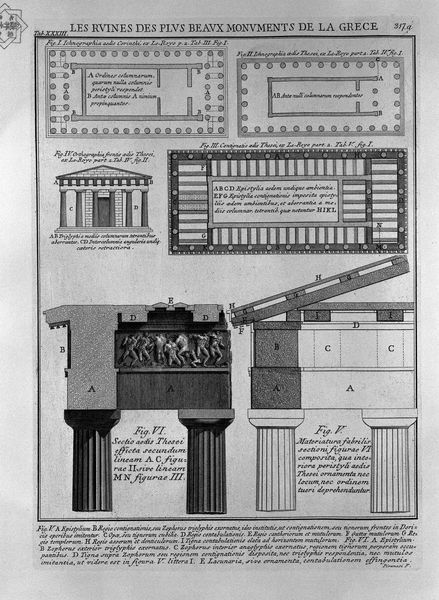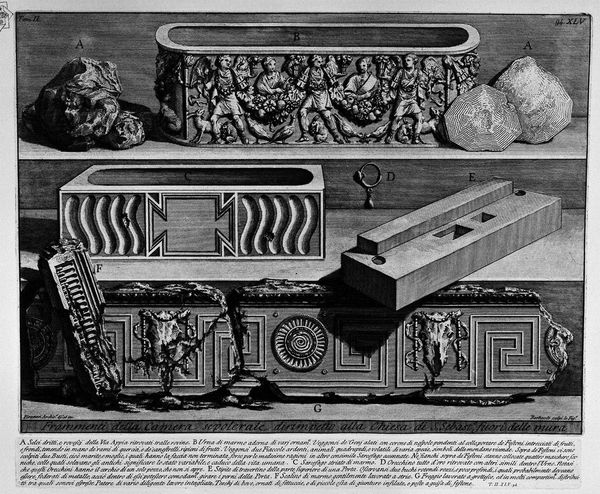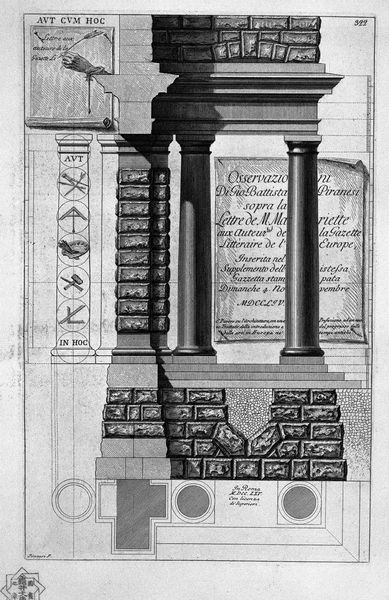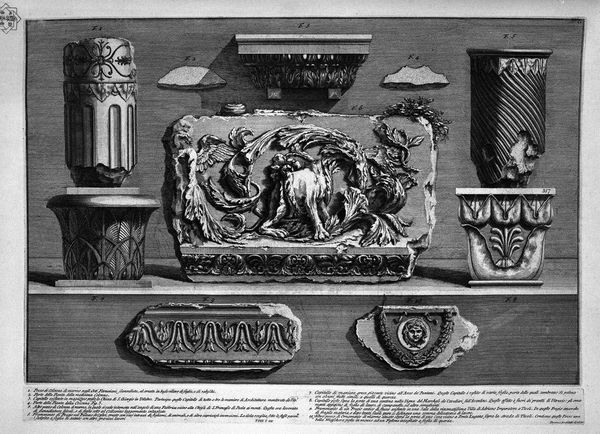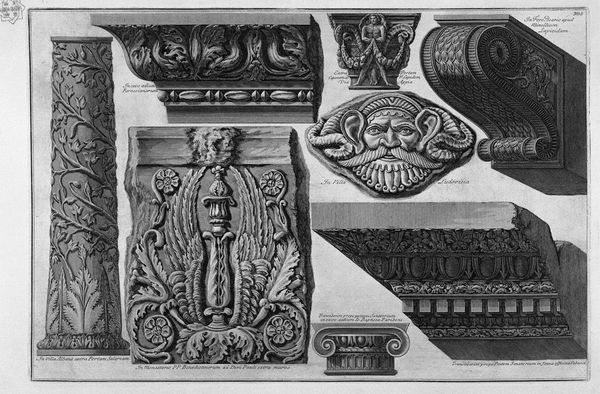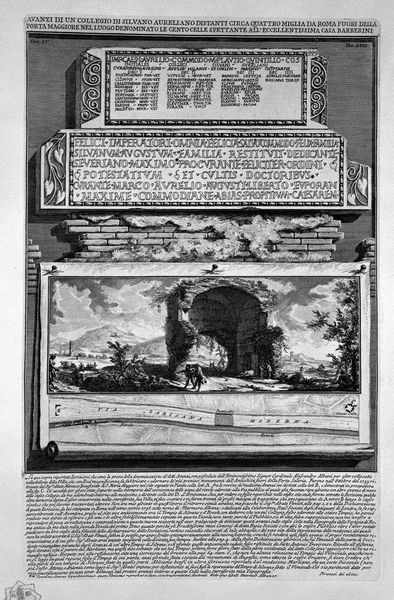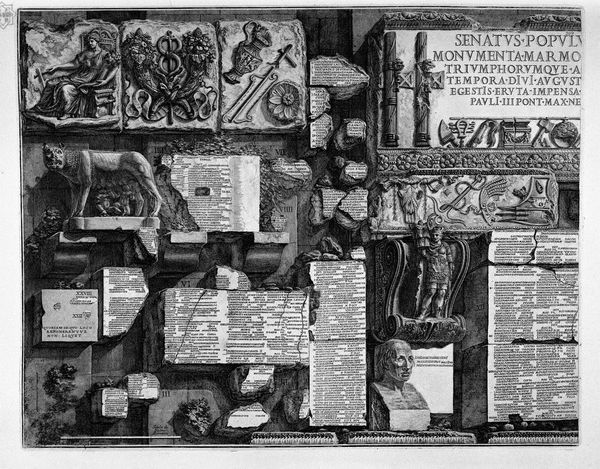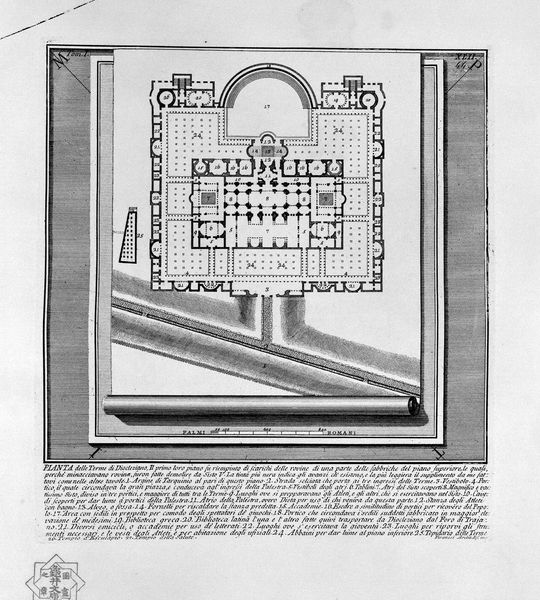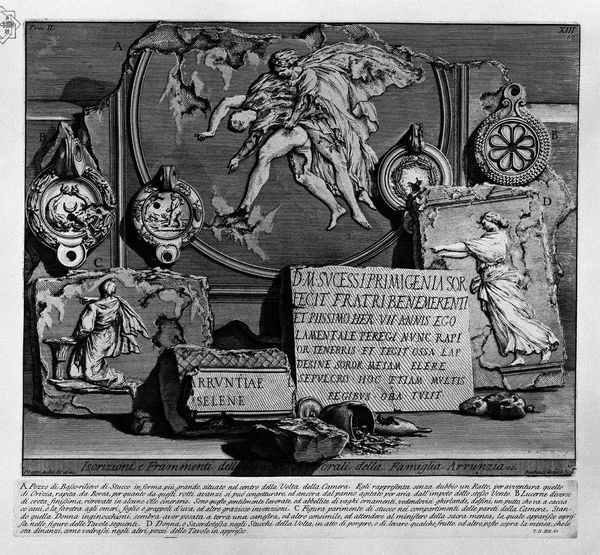
The Roman antiquities, t. 4, Plate XV. View the progress of one of the stacks of the Triumphal Bridge.
0:00
0:00
drawing, print, engraving, architecture
#
drawing
# print
#
old engraving style
#
perspective
#
romanesque
#
geometric
#
ancient-mediterranean
#
column
#
limited contrast and shading
#
line
#
cityscape
#
history-painting
#
engraving
#
architecture
Copyright: Public domain
Curator: Here we have an engraving by Giovanni Battista Piranesi, part of his series "The Roman Antiquities." Specifically, this plate showcases details related to what he calls the Triumphal Bridge. Editor: It's striking. The crisp lines and dramatic perspective give it a fantastical, almost theatrical feel, even though it’s an architectural study. The high-contrast engraving almost makes the buildings leap off the page. Curator: Precisely. Piranesi wasn’t just documenting ruins; he was actively interpreting Rome's grandeur. This print meticulously visualizes structural elements, offering insights into ancient Roman engineering and ambition, emphasizing the visual scale and weight. The diagram at the top gives a sense of its scope and ambition. Editor: And the fragmented inscriptions below, flanked by symbolic objects... It's like a puzzle of cultural memory. The symbols, even without direct translation, hint at layered beliefs, civic identity, and perhaps the personalities and functions that the Roman structures may have had. I keep wondering what to make of the totem-like inscription on the left with its stylized ibis and fish! Curator: It is evocative. Those fragmented inscriptions underscore the act of piecing together a narrative from what remains of the past. They are material and historical relics. Piranesi is showing us not just the buildings but also the traces they left behind, highlighting the importance of archaeological endeavor in constructing historical knowledge. Editor: There is a sense of both admiration and melancholy at work. It’s more than just an architectural study; it captures the human endeavor to preserve and celebrate history, despite the passage of time. The image carries the weight of loss and the urge to memorialize. Curator: Agreed, and think about his 18th-century audience. Prints like this played a vital role in shaping the image of Rome across Europe, impacting architectural design, urban planning, and the Grand Tour phenomenon itself, cementing Rome's role as a locus of heritage. Editor: Considering that makes one reconsider who is experiencing Rome. A beautiful thought! Curator: Indeed. An echo through time, transformed by image and insight.
Comments
No comments
Be the first to comment and join the conversation on the ultimate creative platform.

